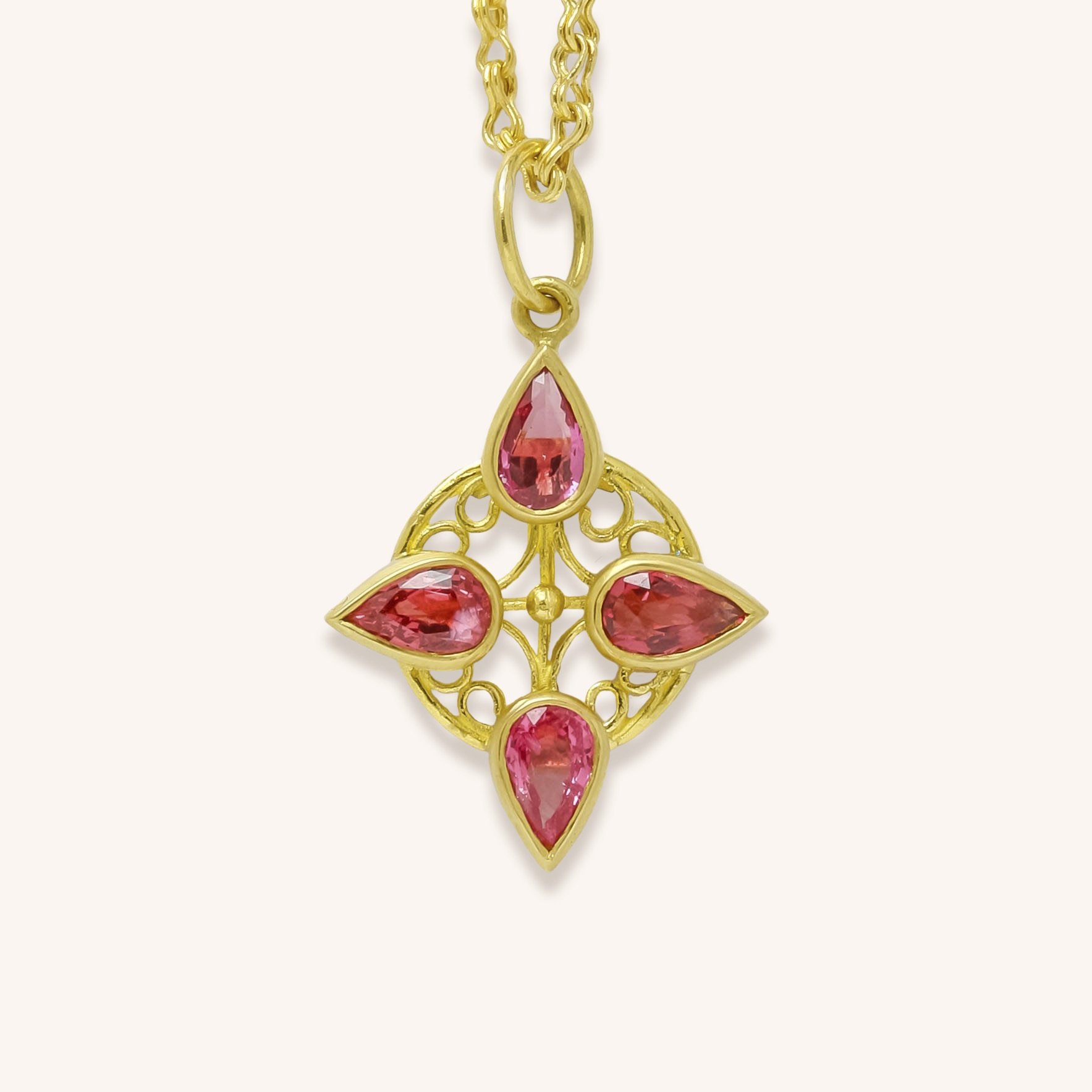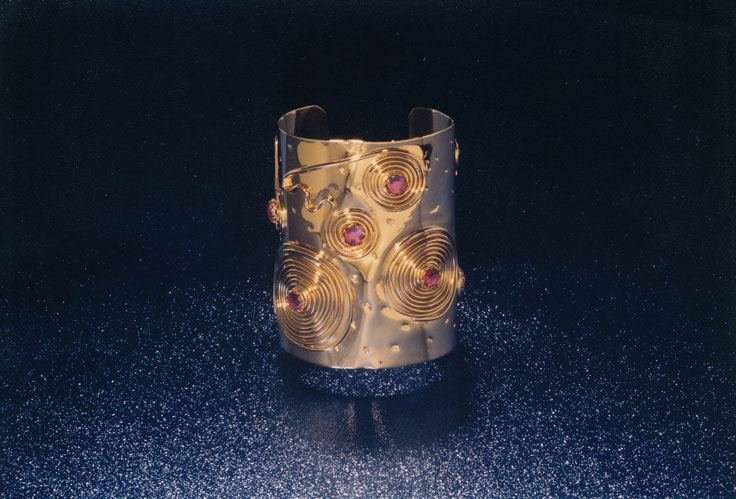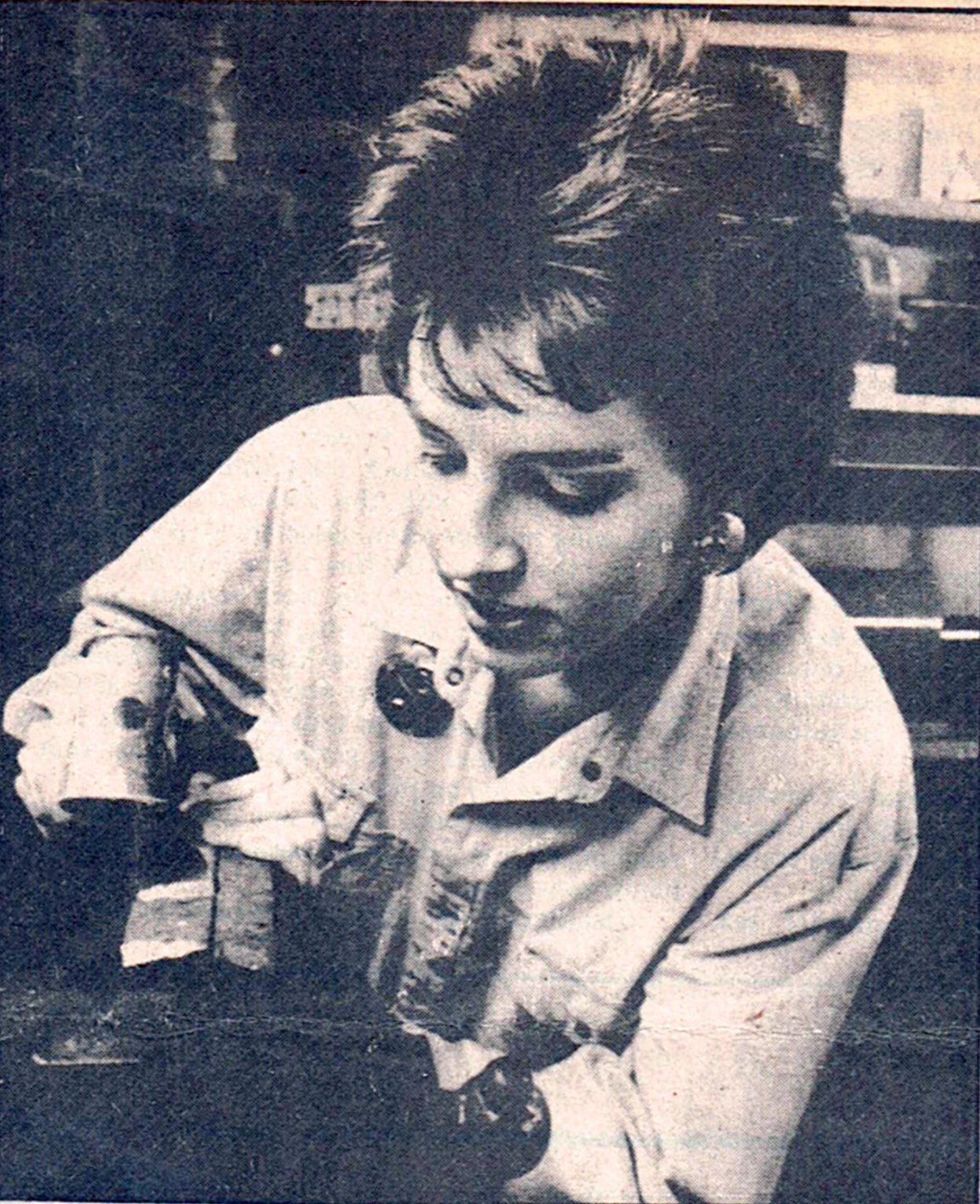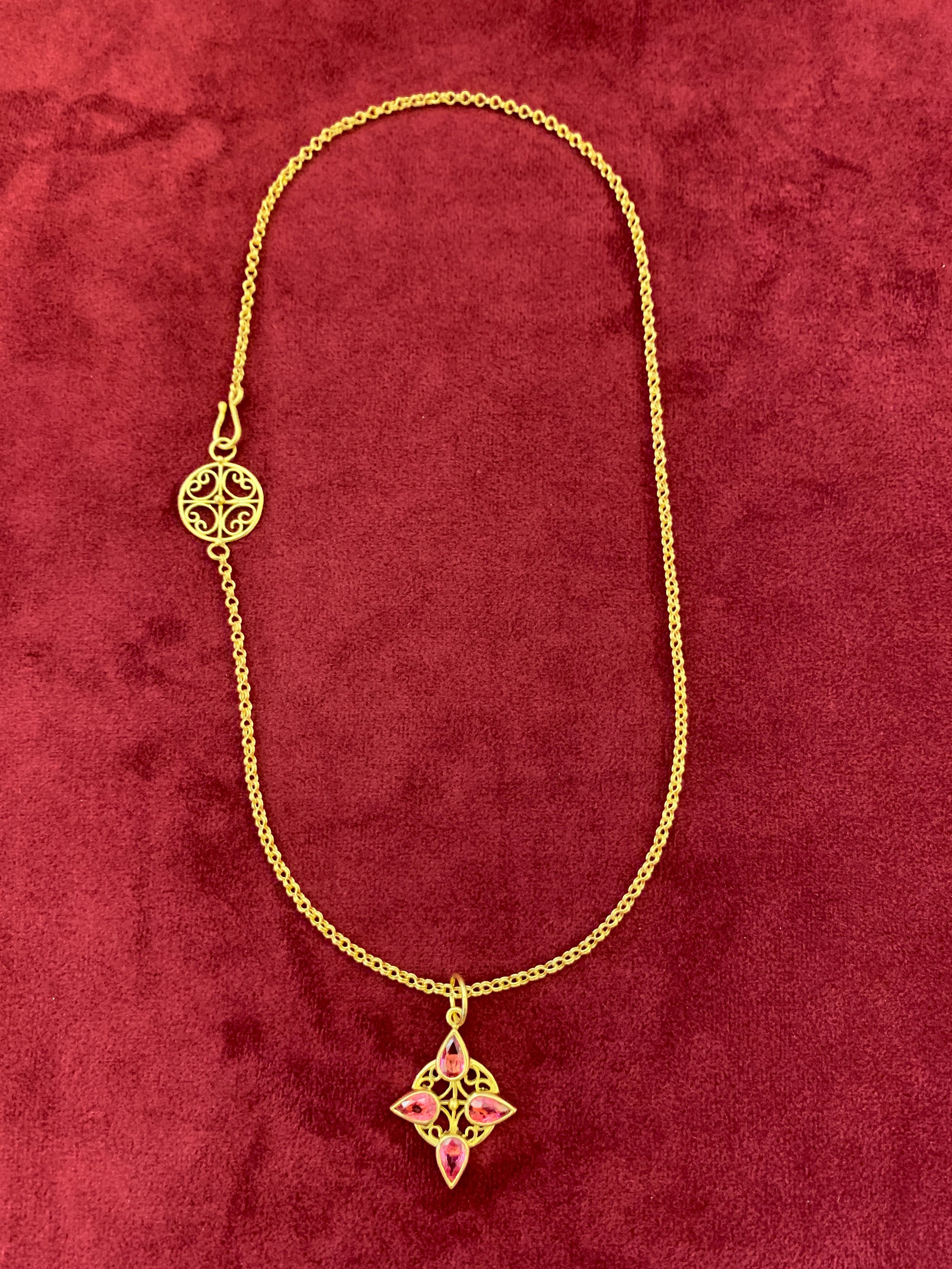Paradiso
in dedication to Jean Stark.
The original Paradiso on an old tablecloth in my Mulberry street apartment 1990.
Paradiso in pink spinel and 22 karat gold, draping from Roma.
In the late 80’s, I picked up The Divine Comedy, and I fell in deep. Suffice it to say, I awoke to find myself in a bright wood. I was caught completely off guard by the mind-bending depth of the poem, so I enrolled in Dante studies at Hunter College in NYC with Dante luminary Giuseppe Di Scipio, Ph.D. as my guide. He was truly a magnetic force, and he transported us through several semesters of La Commedia, focused on either Inferno, Purgatorio, or Paradiso. The classes were taught and read in Italian. One day, I think it was when Dante bids farewell to Virgil, nearly the whole class cried (triggered by the tears of the professor). This was it. I became a bona fide Dantephile. Since that day, the thirst for all things Dante has never been quite quenched.
Around that same time, I was studying goldsmithing. In 1989, seven years after graduating from FIT, I began my studies with master goldsmith Cecelia Bauer, a gifted mentor who taught me the techniques that she had learned from the Kulicke-Stark Academy. Her studio was in TriBeCa; I lived on nearby Mulberry Street.
Chains I made in Ceceila’s class. Photographed in 1992, 22 karat gold Egyptian Flat Link and Roma.
Learning about Dante while studying ancient metalsmithing was kind of cool. I took for granted that I followed these topics on my own with no one’s prompting. I had already read Benvenuto Cellini’s autobiography before I turned 20, and I guess I was always looking for ways to connect the dots.
While Cecelia trained me in the art of granulation and repoussé, she was fully immersing me in Jean Stark’s "Classical Loop-in-Loop Chains” book. Jean was a maverick goldsmith who taught and inspired a web of smiths around the world. She co-founded the Kulicke-Stark Academy of Jewelry Art in New York City in 1972, she revived the granulation technique that was used throughout antiquity into the 11th century (and then reproduced by craftsman who didn’t share its secrets), and she founded the Jewelry Arts Institute, also in NYC. Who I am as an artist and goldsmith is greatly influenced by Jean and her groundbreaking book.
Fine silver samples, handwoven with engraved tags by Jean Stark displayed on her famous book, Classical Loop-in-Loop Chains.
My pre-Met study with Cecila Bauer took me from costume to classical. Shown here is a close up of Roma chains with the filigree clasp that would become Paradiso.
A 3” cuff I made in 1985 has scrolls and bright pink crystal stones. It came out of my imagination, but looking back now I can see the same scrolls and swirls within the filigree of the ancients. When Cecelia taught me to make a filigree circle clasp, I embellished it with four stones, making it into a cross of pink, green, blues and yellow. I called it Paradiso.
The large cuff bracelet that I made in the early 80’s. / Yours truly in the 80’s banging out a cuff.
Paradiso represented a transformative moment for me. It was made for friends who supported me by commissioning it in different colors. Paradiso became a central piece in my collection and to this day it’s one of my favorites because of its simplicity. In 2018, I invested in four fabulous and rare pink spinels and crafted Paradiso anew, draping it from a 22-karat gold loop-in-loop that I call my Roma chain. The piece sold during the pandemic. Paradiso helped me through an actual dark wood, the plague of 2020.
Paradiso in pink spinel and 22 karat gold, draping from Roma.
Three colorways of Paradiso from the late 1990’s.
For me, developing my craft through Cecelia in 1989 was pivotal. The techniques to make Paradiso and Romagave me the qualifications I would later need to become a goldsmith at the Metropolitan Museum of Art. While at The Met, I worked side-by-side with master goldsmith Pamela Farland who remains a dear friend today. (Sean had Pamela design and craft my engagement ring in 1998). Years prior to that, Pamela had studied and taught at Kulicke-Stark, so we already had a synergy in our smithy worlds. Together, and in our separate ways, along with other apprentices of the precious art, we have popularized and preserved ancient goldsmithing techniques with the same vigor of Professor Di Scipio’s emotion-filled Dante lectures.
2022. That’s my engagement ring by Pamela Farland (I made the wedding band). The Dante book is my favorite translation of Inferno by Mark Musa. That’s my original copy that I studied from in the 80s. Also shown is my copy of Cellini’s Autobiography, the book I read while in FIT in 1980. In the background are my pieces that I wear every day; Victoria sphere earrings, Donna ring in ruby & diamond, Decorative Sphere pendants and Peace Sign on Roma chain, #1 Sister charm, all in 22-karat gold. And an inherited gold cross and charm with a prayer in Italian engraved on the back.
Ulderico Giuseppe Petrosso is a new friend and goldsmith I met just before the pandemic. I went to visit his goldsmithing workshop near Perugia in January of 2020. We have the same obsession to pour labor into our work at risk of no one noticing. On his table was Jean Stark’s “Classical-Loop-in-Loop” book. It was like meeting an old friend and catching my breath realizing how far and wide, yet obscure, this jeweled art is.
Examples of Ulderico’s fine work in Italy.
Examples of Ulderico’s fine work in Italy.
A week ago as of this writing, I learned of the passing of Jean Stark. Although I never worked with her or met her, a few years back I was gifted this treasure of chain (by the step-daughter of renowned artist Noma Copely, a close friend to Kulicke-Stark in the 70s), pieces that were made and hand engraved by Jean Stark. These precious artifacts are on display in the DDL atelier.
Paradiso marked a period in time that was transitional. My 80s were punk rock, dark, edgy, and all about discovery. The 90s were an era of piecing things into place and journeying through the hopeful years. It may have been more appropriate to call this piece Purgatorio (although not as sweet a title, eh?). What will the next decade hold?












